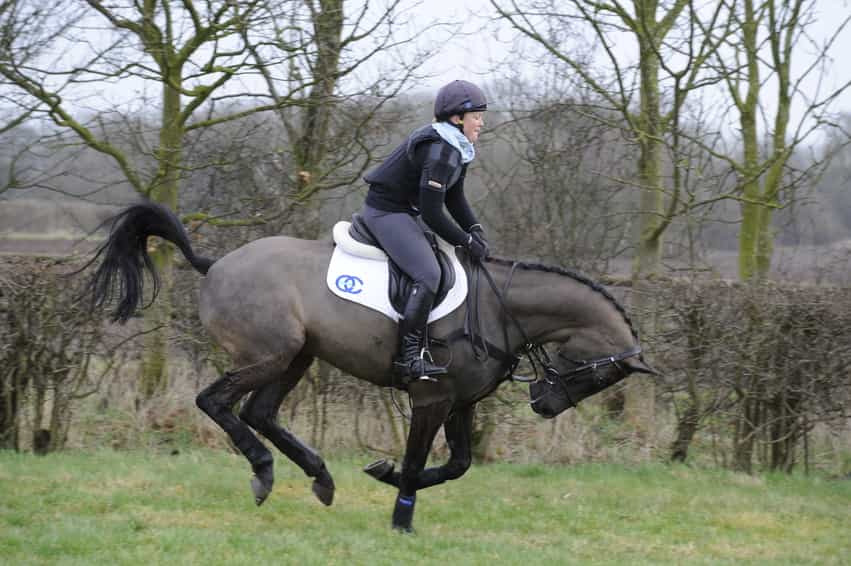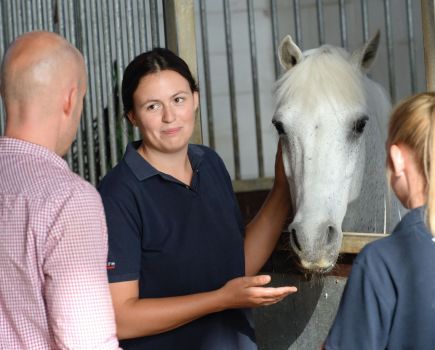Spring: some days it’s warm, others it’s cold — and often it rains. Even so, the days are longer which means spending more time with and riding our horses. However, some horses show a touch of ‘spring fever’. They’re more sprightly and likely to exhibit reactive and anxious behaviour. In some horses, bucking, spooking and being more spritely to handle become commonplace, which can knock your confidence and make you less likely to want to ride. Not good!
So, why do some horses react like this in spring? The short answer is grass. The first shoots of spring grass start coming through before we can even see it, and it is eaten as quickly as it is growing, which means the problem sneaks up on us. We might notice less consumption of hay, a change in consistency and colour of droppings (looser and greener), and horses coming in from the paddock with ‘gassy bellies’. All of these signal that your horse is enjoying the first flush of spring grass.
But what’s so bad about spring grass, we hear you ask? Spring grass is very sweet and attractive to horses. Studies show that horses eat faster in the spring — they eat more per day in pounds of grass than in the summer. This is possibly because they are designed to survive on very little through the winter, so when the spring grass comes through, they are eager to eat to build up their body weight again.
Grasses store sugars near the base of the plant, so when your horse grazes short grass, he is getting a very sweet, high-sugar parcel that is high in energy.
Magnesium intake
Another factor could also be that magnesium uptake in grazing can be low in the spring due to the higher potassium levels in grass, which can affect concentration levels.
“Other things to consider are that stabled horses have more turnout in spring, which leads to less handling and possibly bad behaviour when being caught and led,” says equine behaviourist Kay Willoughby.
“We also tend to start doing more exciting things with our horses after a winter spent largely in the manège under lights, particularly if their owners work full time. Hacking out in open spaces, cantering and jumping can all be very exciting after a winter of sticking to road work and being limited to the arena.”
Outlandish behaviour
A horse’s perception also needs to be considered — it’s how they stay safe in the wild by noticing the tiniest differences and changes in their home range.
“As seasons change, so do the surroundings and many horses will have been largely stabled during winter with fewer outings, fewer large gatherings, less hacking if the weather is bad, and even fewer cyclists, for example,” says Kay.
“Horses can see a long way ahead, but unlike predators they are less able to judge distance and speed of approach so are more cautious. Add to this extra energy from the spring grass and reintroduction of all the fun things like hacking and going on outings, to fun rides and shows, and in come their genetically pre-programmed moves like spooking, planting and staring, napping, rearing and spinning.”
Bucking is another behaviour that is notoriously associated with spring.
“Bucking in spring often occurs when horses are keen to get galloping and are stopped from doing so, and can be due to excitement and excess energy,” says Kay.
6 things you can do
If left unchecked, a fresh horse’s behaviour can put us off riding and make them dangerous to ride and handle, so it’s vital that it’s addressed quickly and safely.
1 Diet
The first thing to consider is diet.
“Introduce spring grass gradually and continue to offer hay,” says Kay. “Feed for appropriate work levels, taking into account what they are getting out of their grazing, which is more nutritious in spring. If needs be, restrict grass intake.”
2 Establish manners
Spend some time handling your horse from the ground before you start riding him to establish his manners and get his attention on you. Bonding with him in this way will cement your relationship for when you are in the saddle.
3 Vary your riding routine
When it comes to riding, keep your programme varied to prevent your horse from becoming bored — a horse with plenty to keep his mind busy will be less likely to misbehave.
“Mix up your usual riding routine. For example, don’t always canter in the same spot out hacking, or follow the same schooling routine in the arena,” advises Kay. “If you are in the arena, put out poles in a variety of shapes and distances to maintain your horse’s concentration.”
4 Lunge/long-rein first
If necessary, it might be a good idea to lunge or long-rein your horse for 10 minutes before you get on to allow them to burn off any excess energy.
5 Time your ride wisely
You could also try riding your horse in the afternoon after they have spent the morning out in the field, especially if they are stabled at night.
“Keep your horse’s training at a realistic level for his fitness and always stay at slow speeds until they are completely relaxed,” says Kay. “Fresh horses who start playing up when they haven’t warmed up properly are more likely to injure themselves.”
6 Seek help
If you are still struggling with your horse’s behaviour, ask your instructor to come and assist you.
“Enlist the help of a specialist who will teach you how to deal with your horse’s quirks safely,” says Kay. “Go at the right pace for you and your horse, and don’t feel pressurised to do anything you feel anxious about until you are ready. Before heading out to a competition, consider attending some clinics first with limited numbers in your group to keep everything relaxed and quiet.”









